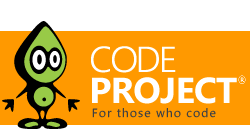OpenCL
OpenCL
Great Reads
by
From safe roads to enjoyable commutes,
by
Digital displays and signs are all around you.
by
This paper introduces Intel software tools recently made available to accelerate deep learning inference in edge devices (such as smart cameras,
by
In this article,
Latest Articles
by
From safe roads to enjoyable commutes,
by
Digital displays and signs are all around you.
by
This paper introduces Intel software tools recently made available to accelerate deep learning inference in edge devices (such as smart cameras,
by
In this article,

